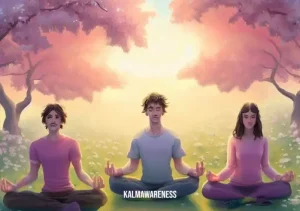Yin Yoga Dragon Pose: A Journey of Balance and Flexibility
Introduction
In the realm of yoga, where tranquility meets strength and flexibility intertwines with balance, the Yin Yoga Dragon Pose stands out as a captivating posture that takes practitioners on a journey of self-discovery and serenity. This article delves into the essence of the Yin Yoga Dragon Pose, exploring its origin, difficulty level, category, and the recommended duration to hold the pose. Whether you’re a seasoned yogi or a beginner seeking to embrace the transformative power of this pose, join us on this enlightening expedition.
Table: Pose Information
| Description | Explanation |
|---|---|
| Pose Name | Yin Yoga Dragon Pose |
| Original Name | Lunging Low Lunge or Dragon Pose (Sanskrit: Anjaneyasana) |
| Difficulty Level | Intermediate |
| Pose Category | Yin Yoga |
| Exercise Duration | Beginners: 1-2 minutes; Advanced: 3-5 minutes |
The Story Behind the Pose
The Yin Yoga Dragon Pose, with its roots in traditional yoga practices, is also known by its Sanskrit name “Anjaneyasana,” named after the divine being Lord Hanuman’s mother, Anjana. This pose pays homage to Hanuman’s journey of courage, devotion, and ultimate triumph, inspiring practitioners to tap into their inner strength and resilience.
Embracing the Yin Yoga Dragon Pose
Step-by-Step Guide
- Starting Position: Begin in a tabletop position, aligning your wrists under your shoulders and knees under your hips.
- Right Foot Forward: Step your right foot forward between your hands, ensuring your knee is directly above your ankle.
- Back Knee Descent: Lower your back knee to the floor, keeping the top of your foot flat on the mat.
- Alignment Check: Ensure your front knee forms a 90-degree angle, and your thigh is parallel to the ground. Keep your back leg straight and extend it as far back as comfortable.
- Pelvic Alignment: Square your hips to the front of the mat, maintaining balance and stability.
- Elevated Chest: Inhale deeply as you lift your chest and heart towards the sky, elongating your spine.
- Arms Extension: Extend your arms overhead, with your biceps aligned with your ears. Press your palms together in a prayer position.
- Engage Your Core: Draw your navel towards your spine to activate your core muscles, supporting your lower back.
- Gaze Forward: Soften your gaze, looking straight ahead or slightly upward to maintain focus.
- Breathe and Relax: Take slow, deep breaths as you sink into the pose, allowing any tension to melt away.
Important: Ensure you repeat this sequence on the other side by switching the position of your legs.
The Yin Yoga Essence
Yin Yoga is a slow and meditative style that targets the connective tissues, promoting deep relaxation and increased flexibility. The Dragon Pose epitomizes the Yin essence, inviting practitioners to find stillness and surrender in the present moment.
Unraveling the Benefits
The Yin Yoga Dragon Pose offers a myriad of benefits that enrich the mind, body, and soul. Some of the notable advantages include:
- Hip Flexor Stretch: The pose deeply stretches the hip flexors, releasing tension accumulated from long hours of sitting.
- Thigh and Groin Opening: It opens the thighs and groins, improving circulation and flexibility in the lower body.
- Heart Chakra Activation: The heart-opening aspect of the pose stimulates the heart chakra, fostering a sense of compassion and self-love.
- Emotional Release: Practicing this pose may lead to emotional release, as it encourages introspection and inner exploration.
- Balanced Energy Flow: The Dragon Pose balances the flow of energy in the body, promoting harmony and vitality.
- Mindful Awareness: Holding the pose for an extended period cultivates mindfulness and patience.

Unraveling the Benefits and Variations of the Yin Yoga Dragon Pose
In the first part of our exploration, we took a deep dive into the essence of the Yin Yoga Dragon Pose, its history, and step-by-step instructions to embrace this empowering posture. Now, let’s venture further into the realm of this pose and discover its incredible benefits, variations tailored to different experience levels, and considerations for those who may not find the pose suitable.
Embracing the Benefits
The Yin Yoga Dragon Pose offers a plethora of benefits that extend beyond the physical realm and delve into the realms of mental and emotional well-being.
1. Flexibility and Mobility:**
As a deep hip flexor stretch, the Dragon Pose targets the hip and pelvic region, promoting enhanced flexibility and mobility in these areas. Regular practice can lead to increased range of motion, making it particularly beneficial for athletes and individuals seeking to improve their overall flexibility.
2. Stress and Tension Release:
The long holds in Yin Yoga, including the Dragon Pose, facilitate the release of stress and tension stored in the connective tissues. As you surrender into the posture, you may feel a sense of catharsis, allowing emotional burdens to dissipate.
3. Hip and Groin Opening:
The pose effectively opens the hips and groins, which is especially beneficial for individuals who spend prolonged periods sitting or have tightness in these areas. A regular Dragon Pose practice can alleviate discomfort and enhance comfort in daily activities.
4. Heart Chakra Activation:
The heart-opening aspect of the Yin Yoga Dragon Pose activates the heart chakra, fostering compassion, love, and emotional balance. It encourages practitioners to open their hearts to themselves and others, nurturing a deeper connection within.
5. Improved Circulation:
As you hold the pose, blood circulation increases in the targeted areas, enhancing nutrient delivery and waste removal. This boost in circulation can contribute to overall health and vitality.
6. Mindful Awareness and Patience:
Practicing the Dragon Pose requires stillness and patience, encouraging mindful awareness of the present moment. It teaches practitioners to be patient with themselves and their bodies, fostering a sense of inner peace.
Who Should Avoid the Pose?
While the Yin Yoga Dragon Pose offers numerous benefits, it may not be suitable for everyone. It is essential to exercise caution and avoid the pose under certain circumstances:
1. Knee or Hip Injuries:
Individuals with knee or hip injuries should avoid the Dragon Pose or perform it with modifications, as it can place additional strain on these joints.
2. High Blood Pressure:
Those with high blood pressure should exercise caution during the pose, as the heart-opening aspect may lead to increased blood flow and exacerbate their condition.
3. Pregnancy:
Pregnant individuals should refrain from practicing the Dragon Pose, especially during the later stages of pregnancy, to avoid potential discomfort or strain.
4. Recent Abdominal Surgery:
If you’ve undergone recent abdominal surgery, it is advisable to avoid this pose, as it involves deep stretching and engagement of the abdominal region.
Variations for Different Experience Levels
The Yin Yoga Dragon Pose can be modified to accommodate practitioners of varying experience levels, making it accessible to both beginners and advanced yogis.
1. Beginner Variation: Supported Dragon Pose
For beginners or individuals with limited flexibility, using props like yoga blocks or bolsters can provide support and ease into the pose. Place the prop under your front thigh for added support while maintaining the hip-opening benefits.
2. Intermediate Variation: Twisted Dragon Pose
To deepen the pose and engage the obliques, you can add a gentle twist to the Dragon Pose. Place your hands on the floor, and twist your upper body towards the front leg, gazing over your shoulder.
3. Advanced Variation: Quad Stretch Dragon Pose
For advanced practitioners, the Quad Stretch variation adds an extra challenge by reaching back and grabbing the back foot with the corresponding hand. This deepens the hip flexor and quadricep stretch.

Unveiling the History and Spiritual Significance of Yin Yoga Dragon Pose
In the previous chapters, we embarked on an illuminating journey through the essence of the Yin Yoga Dragon Pose, exploring its benefits, variations, and considerations for different experience levels. Now, let’s delve deeper into the rich history of this ancient pose, its spiritual significance, and how to make the most out of your practice. Additionally, we’ll shed light on common mistakes to avoid and modifications that cater to individuals with injuries or limited flexibility.
The History of Yin Yoga Dragon Pose
The origins of the Yin Yoga Dragon Pose can be traced back to ancient yogic texts and the traditional practices of Hatha Yoga. It is said that sages and practitioners of old embraced this pose as a means of honoring the dragon, symbolizing strength, power, and transformation. Through generations, the pose evolved, blending with different cultures and spiritual practices, eventually becoming an integral part of modern Yin Yoga.
The Spiritual Significance
Beyond its physical benefits, the Yin Yoga Dragon Pose carries profound spiritual significance. In Yin Yoga philosophy, the dragon is often seen as a representation of the dormant energy residing within us. The pose, with its heart-opening aspect, is believed to awaken and activate the heart chakra, fostering a connection with compassion, love, and profound transformation. Practicing this pose can be an opportunity to delve into the depths of the soul and discover the dragon’s innate wisdom within.
Tips for Deepening Your Practice
To experience the full transformative power of the Yin Yoga Dragon Pose, consider these tips to enhance your practice:
1. Breathe with Intention:
Consciously focus on your breath as you move into the pose and throughout the hold. Deep, steady breaths help release tension and facilitate a deeper sense of relaxation.
2. Maintain Alignment:
Pay attention to your alignment, ensuring your front knee remains directly above your ankle. Square your hips to the front and maintain a long, extended spine.
3. Embrace Stillness:
The Dragon Pose encourages stillness and introspection. Embrace the opportunity to be present with yourself and cultivate mindfulness during the hold.
4. Explore Variations:
Experiment with the supported and twisted variations, exploring which variation resonates best with your body and intentions.
5. Honor Your Body:
Listen to your body’s signals and modify the pose as needed. Respect your boundaries and avoid pushing yourself into discomfort.
Common Mistakes to Avoid
To ensure a safe and effective practice, watch out for these common mistakes while performing the Yin Yoga Dragon Pose:
1. Collapsing the Chest:
Avoid rounding or collapsing the chest during the pose. Keep your heart lifted and open to fully experience the heart-opening benefits.
2. Overarching the Back:
Avoid excessive arching of the lower back. Engage your core muscles and maintain a neutral spine.
3. Straining the Knees:
Be mindful of your knee alignment and avoid letting your knee extend beyond your ankle.
4. Forcing the Pose:
Avoid forcing your body into the pose. Respect your limits and allow yourself to gradually progress.
Modifications for Injuries or Limited Flexibility
For individuals with injuries or limited flexibility, here are some helpful modifications to ensure a safe and comfortable practice:
1. Knee Cushioning:
Place a cushion or folded blanket under the back knee for added support and comfort.
2. Elevated Hands:
If reaching the floor is challenging, use yoga blocks or place your hands on an elevated surface.
3. Wall Support:
Stand facing a wall and gently rest your hands against it for added balance and support.
Complementary Poses
To enhance the benefits of the Yin Yoga Dragon Pose, consider incorporating these complementary poses into your practice:
1. Child’s Pose (Balasana):
A gentle resting pose that complements the heart-opening nature of the Dragon Pose, providing a moment of surrender and relaxation.
2. Pigeon Pose (Eka Pada Rajakapotasana):
A deep hip opener that further stretches the hip flexors and complements the Dragon Pose’s hip-opening benefits.
3. Sphinx Pose (Salamba Bhujangasana):
A heart-opening pose that can be a preparatory pose for the Dragon Pose, gently warming up the back and chest.
Embark on Your Dragon Pose Journey
With an understanding of the historical roots, spiritual significance, and insightful tips for practice, you are now ready to fully embrace the transformative power of the Yin Yoga Dragon Pose. Allow this captivating pose to awaken the dragon within you, igniting strength, compassion, and profound growth on your yoga journey.





